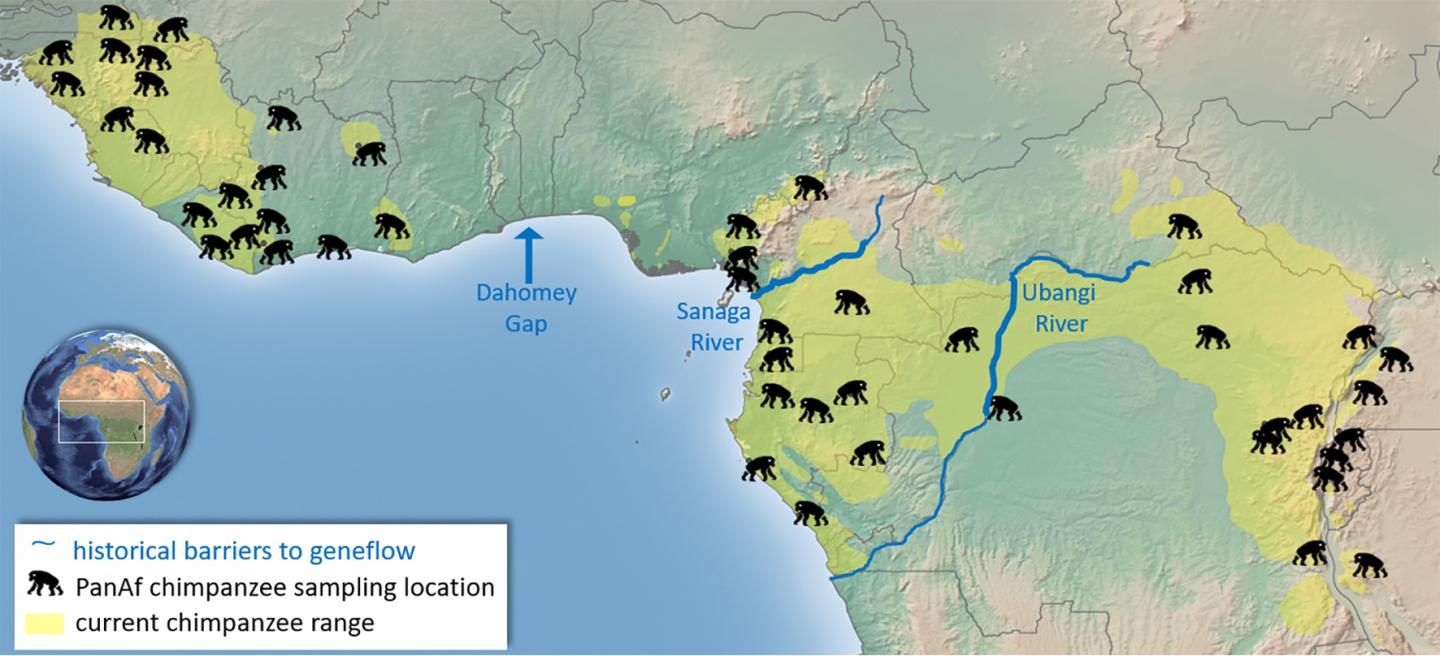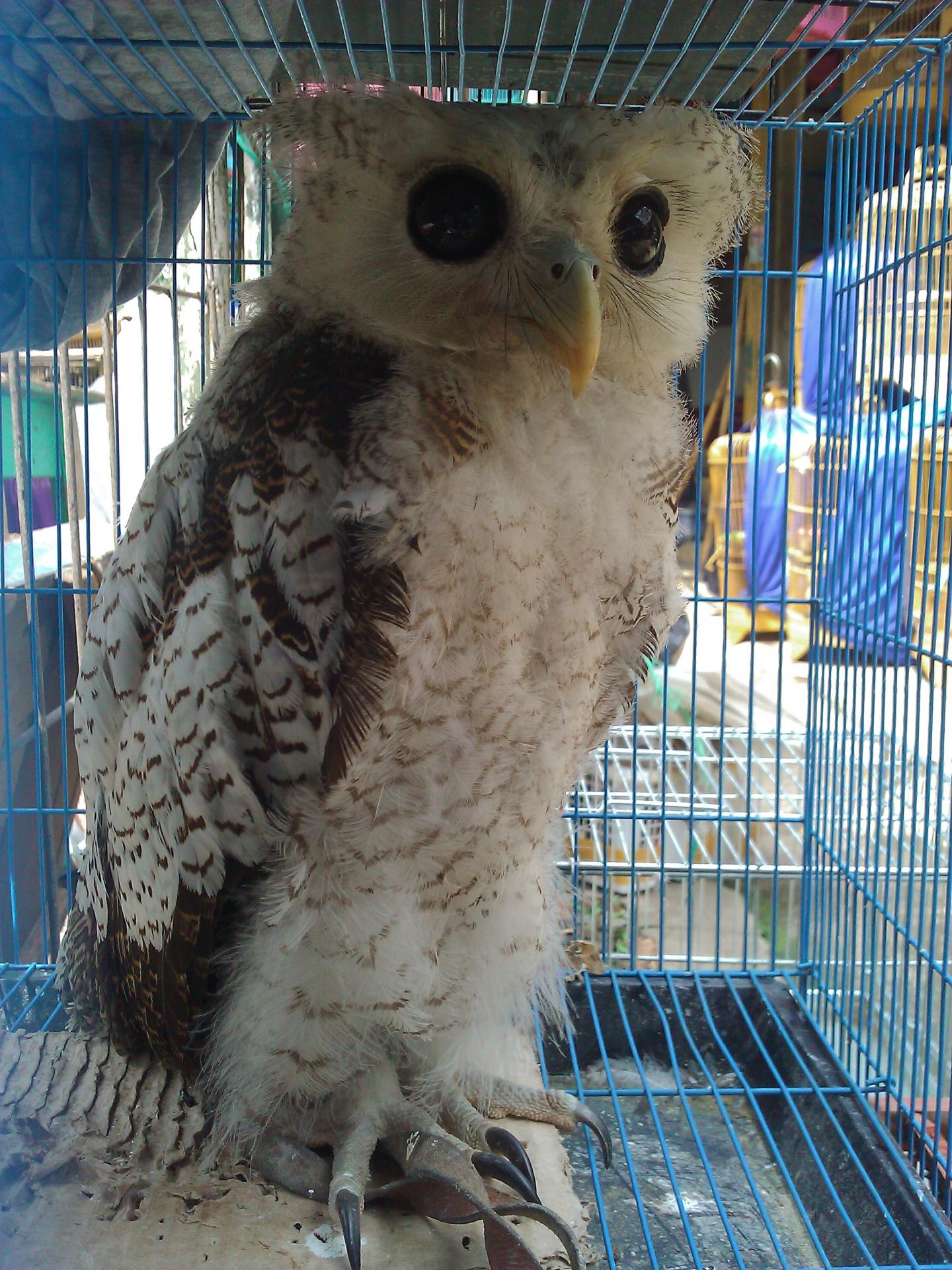The disappearance of the species from their natural habitat is a growing problem, which unfortunately means the need to intensive management, including ex situ conservation and translocations, is also growing. For the translocation to be successful, risk factors must be…
Tag: ZOOLOGY/VETERINARY SCIENCE
How do birds breathe better? Researchers’ discovery will throw you for a loop
New findings offer potential to enhance flow engineering
An unusual creature is coming out of winter’s slumber. Here’s why scientists are excited.
Duke Lemur Center recreates the seasonal swings of native habitat, helping to unlock the secrets of hibernation.
Study suggests healthy ecosystems are vital in reducing risk of future deadly pandemics
Practices recommended to reduce the risk of future pandemics through ‘protected and conserved area management’
Birds learn to avoid flashy, hard-to-catch butterflies and their lookalikes
GAINESVILLE, Fla. — The showy colors of some butterflies could advertise their speed and nimbleness, much like a coat of bright yellow paint on a sports car. A new study shows birds can learn to recognize these visual cues, avoiding…
A new model predicts snakebites to save human lives
Tel Aviv University participates in international study
Weakened protections led to more disappearances of endangered Mexican wolves
MADISON, Wis. — Mexican wolves in the American Southwest disappeared more quickly during periods of relaxed legal protections, almost certainly succumbing to poaching, according to new research published Wednesday. Scientists from the University of Wisconsin-Madison found that Mexican wolves were…
TGen seeks help from Arizona dog and cat owners for COVID-19 study
Project builds on ‘One Health’ testing and disease surveillance collaborations in Arizona
Citizen scientists help expose presence of invasive Asian bamboo longhorn beetle in Europe
A worryingly high number of Asian bamboo longhorn beetles ( Chlorophorus annularis ) turn out to have been emerging across Europe for about a century already, finds an international research team, headed by researchers from the Center of Natural History…
Two species and a single name: ‘Double identity’ revealed in a venomous banana spider
Spiders from the genus Phoneutria – also known as banana spiders – are considered aggressive and among the most venomous spiders in the world, with venom that has a neurotoxic action. These large nocturnal spiders usually inhabit environments disturbed by…
Milk prebiotics are the cat’s meow, Illinois research shows
URBANA, Ill. – If you haven’t been the parent or caregiver of an infant in recent years, you’d be forgiven for missing the human milk oligosaccharide trend in infant formulas. These complex carbohydrate supplements mimic human breast milk and act…
These sea slugs sever their own heads and regenerate brand-new bodies
You’ve heard of animals that can lose and then regenerate a tail or limb. But scientists reporting in the journal Current Biology on March 8 have now discovered two species of sacoglossan sea slug that can do even better, shedding…
Tracing malaria’s ecology using blood samples from birds
Malaria is the deadliest pathogen in human history. Nearly half the people on Earth are at risk of contracting the disease from the parasites that cause it. But humans aren’t the only ones who can get these parasites–different forms are…
Young white-tailed deer that disperse survive the same as those that stay home
Risky movements that benefit species do not result in added mortality, study finds
Sophisticated skin
Squids’ remarkable ability to tune both the color and the brightness of their iridescence comes down to a subtle but powerful mechanism
Paw hygiene no reason to ban assistance dogs from hospitals
Assistance dogs’ paws are cleaner than their users’ shoe soles, Utrecht University researchers discover

Chimpanzees without borders
Researchers from the Pan African Programme: The Cultured Chimpanzee (PanAf) at the Max Planck Institute for Evolutionary Anthropology (MPI-EVA) and a team of international researchers, collected over 5000 fecal samples from 55 sites in 18 countries across the chimpanzee range over 8 years.
Chimpanzees without borders
A new large-scale study uncovers recent genetic connectivity between chimpanzee subspecies despite past isolation events

Legal wildlife trade needs monitoring to reduce risk of a new pandemic
With three out of four newly emerging infectious human diseases originating in animals*, there is an urgent need to monitor the legal trade in wildlife, according to new research by Vincent Nijman, Professor in Anthropology at Oxford Brookes University.
Animal aggression depends on rank within social hierarchies
Humans and animals alike constantly size up one another. In the workplace, a new employee quickly learns which coworkers are the most respected — and therefore hold more power. Big brothers boss around little brothers. In nature, a dominant male…
Deepwater Horizon’s long-lasting legacy for dolphins
The Deepwater Horizon disaster began on April 20, 2010 with an explosion on a BP-operated oil drilling rig in the Gulf of Mexico that killed 11 workers.
Impacts of the COVID-19 pandemic on mammals at tourist destinations
How have travel restrictions and reduced tourism in response to the COVID-19 pandemic affected mammals in different tourist destinations? Researchers recently reviewed published studies and news stories to consider this question. Their findings are published in Mammal Review . The…
Researchers offer new insights on bird migration
During their seasonal migration, birds typically travel between breeding and non-breeding grounds along migratory routes grouped into major flyways, such as the Indo-European flyway between Europe and the Indian subcontinent. In a new study published in the Journal of Biogeography…
Tracking data reveals shared political responsibility for the conservation of albatrosses and petrel
Global political responsibility for the conservation of albatrosses and large petrels
Tiny computers reveal how wild bats hunt so efficiently
Miniature, bat-borne tags reveal how wild bats use very weak echoes to hunt successfully.
Camera traps reveal newly discovered biodiversity relationship
Data scientists analyze photos from 15 tropical rainforests
Researchers explore relationship between maternal microbiota and neonatal antibody response
A healthy system of gut bacteria, or microbiota, is crucial to health: Gut bacteria not only aid with digestion, but also play an important role in the body’s immune response. Infants, however, are not born with full-fledged gut microbiota, which…
Evolution of one of the fastest jaws in nature – function before form in trap-jaw ants
The trap-jaw ants are famous for having one of the natural world’s fastest movements, but how did the latch-spring mechanism that drives their jaws evolve? According to a study published on March 2nd, 2021 in the open-access journal PLOS Biology…
Wolf social group dynamics matter for infectious disease spread, models suggest
UNIVERSITY PARK, Pa. — By modeling wolves in Yellowstone National Park, researchers have discovered that how a population is organized into social groups affects the spread of infectious diseases within the population. The findings may be applicable to any social…
AAHA and AAFP release updated feline life stage guidelines to the veterinary community
The joint release provides an extension of the heavily referenced 2010 Feline Life Stage Guidelines.
A world first: A robot able to “hear” through the ear of a locust
Tel Aviv University researchers connect a real locust ear to a robot
Deepwater Horizon’s long-lasting legacy for dolphins
The Deepwater Horizon disaster began on April 20, 2010 with an explosion on a BP-operated oil drilling rig in the Gulf of Mexico that killed 11 workers. Almost immediately, oil began spilling into the waters of the gulf, an environmental…
Wrasses dazzle: how fairy wrasses got their flamboyant colours
Coral reef fish diverged in ‘evolutionary arms race’ during last ice age
Behavior of wild capuchin monkeys can be identified by marks left on their tools
Scientists who study capuchin monkeys on a nature reserve in Brazil found that stone tools are used for digging, seed pounding, and stone-on-stone percussion. The monkeys can serve as a model to help understand how humans evolved to use tools.
Global warming poses threat to food chains
Rising temperatures could reduce the efficiency of food chains and threaten the survival of larger animals, new research shows. Scientists measured the transfer of energy from single-celled algae (phytoplankton) to small animals that eat them (zooplankton). The study – by…
Improving water quality could help conserve insectivorous birds — study
Scarcity of insect prey in disturbed lakes and streams drives decline of birds
Agents of food-borne zoonoses confirmed to parasitise newly-recorded in Thailand snails
Parasitic flatworms known as agents of food-borne zoonoses were confirmed to use several species of thiarid snails, commonly found in freshwater and brackish environments in southeast Asia, as their first intermediate host. These parasites can cause severe ocular infections in…
A-maze-ing pheasants have two ways of navigating
Pheasants fall into two groups in terms of how they find their way around – and the different types prefer slightly different habitats, new research shows. University of Exeter scientists tested whether individual pheasants used landmarks (allocentric) or their own…
Cryptic fleshy coat aids larvae in crawling on a moss carpet
“Fleshy lobes” in insect larvae are known as a tool for camouflage but it was found that they can also serve as a locomotion aid.
Chimpanzees and humans share overlapping territories
Chimpanzees and humans “overlap” in their use of forests and even villages, new research shows. Scientists used camera traps to track the movements of western chimpanzees – a critically endangered species – in Guinea-Bissau. Chimpanzees used areas away from villages…
Male superb lyrebirds imitate alarm calls of a “mobbing flock” while mating
When birds see a predator in their midst, one defensive strategy is to call out loudly, attracting other birds of the same or different species to do the same. Sometimes individuals within this “mobbing flock” will fly over or at…
A cat of all trades
Large carnivores are generally sensitive to ecosystem changes because their specialized diet and position at the top of the trophic pyramid is associated with small population sizes. This in turn leads to lower genetic diversity in top predators compared to…
Can polar bears and narwhals cling on as the ice shrinks?
As part of the Journal of Experimental Biology ‘s Special Issue dedicated to climate change, Anthony Pagano (San Diego Zoo Global, USA) and Terrie Williams (University of California, Santa Cruz, USA), discuss the impact of environmental change on two iconic…
Making a difference: comparative biologists tackle climate change
For many, 2020 was notorious for the COVID-19 pandemic, but for climate scientists, the year is also infamous for tying with 2016 as the hottest since records began. ‘Nine of the warmest years on record have occurred since 2010’, says…
Chimpanzees unite against a common enemy
Kyoto University pinpoints a behavior commonly associated with humans
Saki monkeys get screen time for more control over their lives in captivity
Computer scientists have designed a video player that the small primates can activate on demand
Kittens could hold key to understanding deadly diarrheal disease in children
Kittens could be the model for understanding infectious, sometimes deadly, diarrheal disease in both animals and children, according to new research from North Carolina State University. Diarrheagenic Escherichia coli (DEC) bacteria cause lethal diarrheal disease in children worldwide, killing up…
The way a fish swims reveals a lot about its personality, say scientists
The way a fish swims reveals a lot about its personality, say scientists Personality has been described in all sorts of animal species, from ants to apes. Some individuals are shy and sedentary, while others are bold and active. Now…
Unique study of isolated bobcat population confirms accuracy of extinction model
Genetic follow-up on offspring of felines brought to island 30 years earlier validates population viability analysis
Stem cells provide hope for dwindling wildlife populations
A paper recently published in the scientific journal Stem Cells and Development shares an important advancement in conservation — one that may make the difference between survival and extinction for wildlife species that have been reduced to very small population…